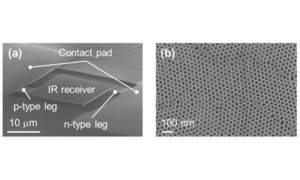Since 2018, the Ecodesign Directive has imposed minimum requirements on the energy efficiency of chillers. However, data centre operators should examine precisely which cases the regulation applies to before investing in new equipment.
When the new Ecodesign Directive came into force in January 2018, it imposed a mandatory minimum energy performance standard (MEPS) on chillers. It is based on the EU Ecodesign Directive from 2009. This laid the legislative foundations for improving the energy efficiency of “energy-using products”. Its objective is a general improvement in energy efficiency during operation and the reduction of CO2 emissions.
As the Ecodesign Directive does not set out any generally applicable requirements, instead regulatory measures are gradually being introduced for certain product categories. Regulation 2016/2281 establishes the rules for the ENER LOT 21 product group. Among other things, it includes new minimum efficiency requirements for chillers with a high operating temperature (+2 to +12°C).
Seasonal energy performance ratio sets new minimum requirements for energy efficiency
To determine energy efficiency, the Ecodesign Directive introduces new KPIs that vary depending on the chiller’s field of use. Whereas the seasonal energy efficiency ratio (SEER) applies to comfort chillers, the key energy reference thresholds for chillers employed in industry are calculated using the seasonal energy performance ratio (SEPR). Previously, only nominal cooling capacity was used as the reference figure for energy efficiency. However, since this nominal value is based on a fixed operating point, the impact of seasonal temperature fluctuations could not be determined with any precision.
As a result, the performance data seen in practice were not representative of actual energy efficiency over the course of a year. In contrast, the seasonal energy performance ratio (SEPR) provides us with the mean of energy consumption, under consideration of changing climatic conditions. It is calculated from the performance coefficients of chillers at four different ambient temperatures and at different load levels (100, 93, 87 and 80 percent). The higher the calculated SEPR, the more energy efficient the cooling unit.
What are the requirements of the Ecodesign Directive?
The Ecodesign Directive provides sets of rules for certain product categories. These so-called Lots cover specific product groups and therefore also stipulate which air conditioning units are subject to the Ecodesign Directive. While Lots 1 ENER and 6 ENER are relevant to air cooling units, Lots 1 ENER and 21 ENER establish the framework for chillers.
Furthermore, specific regulations within the Ecodesign Directive define the requirements for individual product groups. Fundamental aspects covered include stipulations for energy efficiency, an environmental impact assessment, and a product lifecycle analysis. Moreover, the Ecodesign Directive also determines the maximum admissible energy consumption and recycling volume.
No impact on existing equipment
Initially, the new Directive caused uncertainty among data centre operators. Some feared that they would now have to replace their chillers with new systems. However, there is basically no need to take action with cooling systems that are already in operation, because the Ecodesign Directive only applies to new products that are “placed on the market”.
At the same time, chillers with installation and operating parameters below the standards of the Directive absolutely must satisfy the relevant minimum requirements. Compliance is monitored by the responsible market surveillance authorities.
The relevance of the Ecodesign
Directive for data centre cooling Data centre air conditioning fundamentally serves a much more specific market than comfort air conditioning, and therefore accounts for quite a small market segment. The equipment used in the data centre (precision air conditioning unit and ventilation units) also differ technically from comfort air conditioning units in a few key aspects. These include device construction, size, the proportion of latent cooling capacity, and the components and target temperatures used.
The key point, however, is that STULZ precision air conditioning units are not subject to the applicable regulations 1254/2015 and 2016/2281. This is because these apply exclusively to home ventilation units and cooling products aimed at achieving and maintaining a pleasant room temperature for people. Even efficiency figures and operating times differ between data centre units and their comfort air conditioning counterparts. Where chillers are concerned, key differences are encountered in the achieved chilled water temperatures (generally > 12 °C) and unit designs, which are specifically targeted at lowering energy costs. Here, Free Cooling, size-optimised components and adiabatic technology have been playing an important part for many years already. Chillers engineered by STULZ are primarily designed for use in data centres and for cooling equipment rooms, and are only affected by the Ecodesign Directive under certain conditions. In some situations, data centre chillers are also used at outlet temperatures of < 12 °C – in industrial applications or in older data centres, for example. In this case, Regulation 2016/2281 applies, with two efficiency tiers for 2018 and 2021.
All STULZ units already satisfy the efficiency requirements from 2018. And by the end of 2020, they will also meet all Tier 2 requirements of the Ecodesign Directive, which will come in force at the beginning of 2021. The requirements of Regulation (EU) 2016/2281 for comfort chillers will be checked on a project-by-project basis for their relevance to STULZ units, because the systems are chiefly designed for industrial applications and data centres.
Tier 2 of the Ecodesign
Directive Tier 2 of Ecodesign Regulation 2016/2281 will take effect on January 1, 2021. This will usher in slightly tighter requirements for industrial chillers. If you are planning to invest in new equipment in the next few years, it isn’t the date this decision is made that is used to determine conformity, but the day the equipment is brought into operation. In other words, a new system that is planned now but will only be delivered in 2021 may already come under Tier 2 of the Ecodesign Directive. However, STULZ chillers may be used in conformity with the standard without restriction, even within projects, during this transitional phase.
Cookie Consent
We use cookies to personalize your experience. By continuing to visit this website you agree to our Terms & Conditions, Privacy Policy and Cookie Policy.














